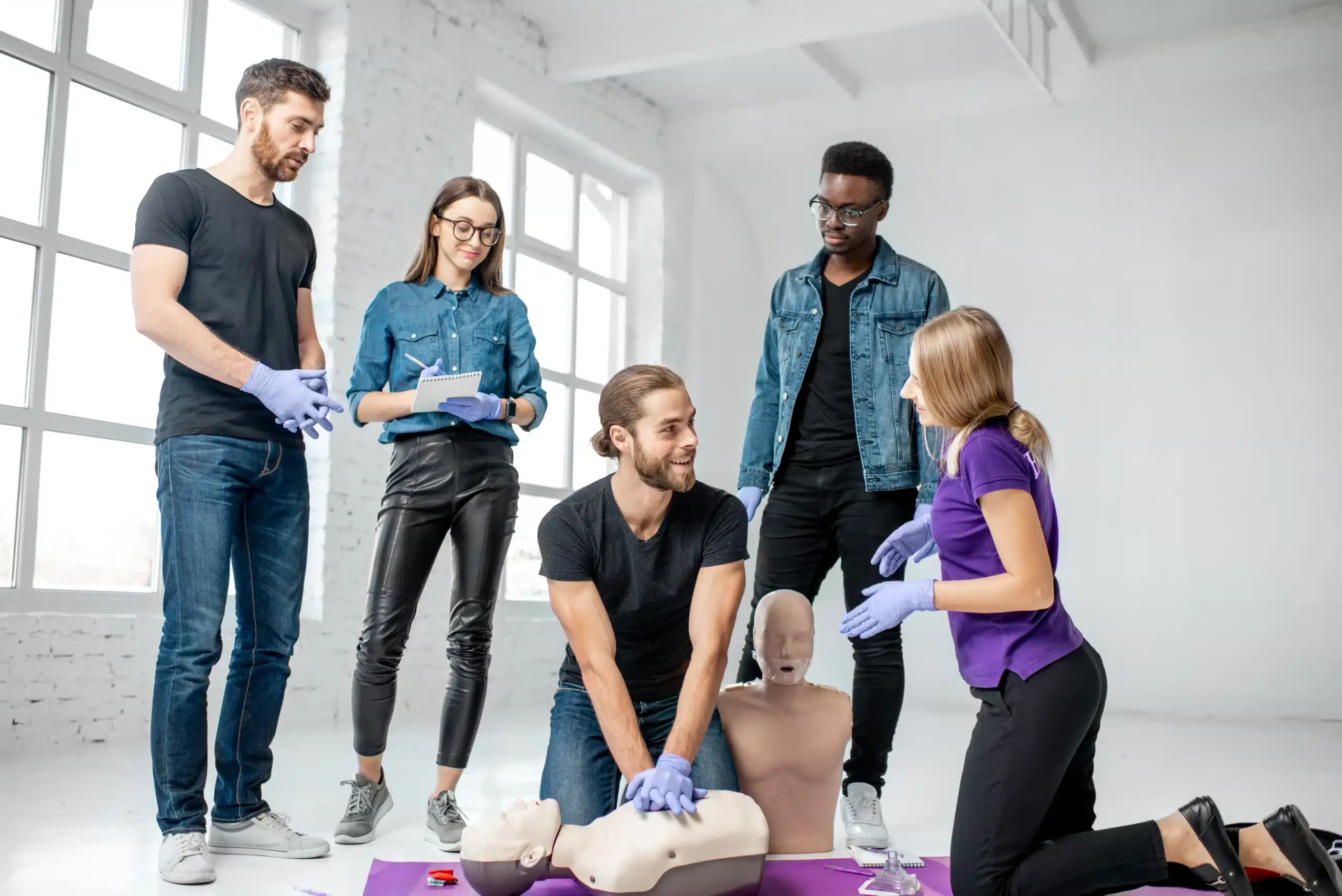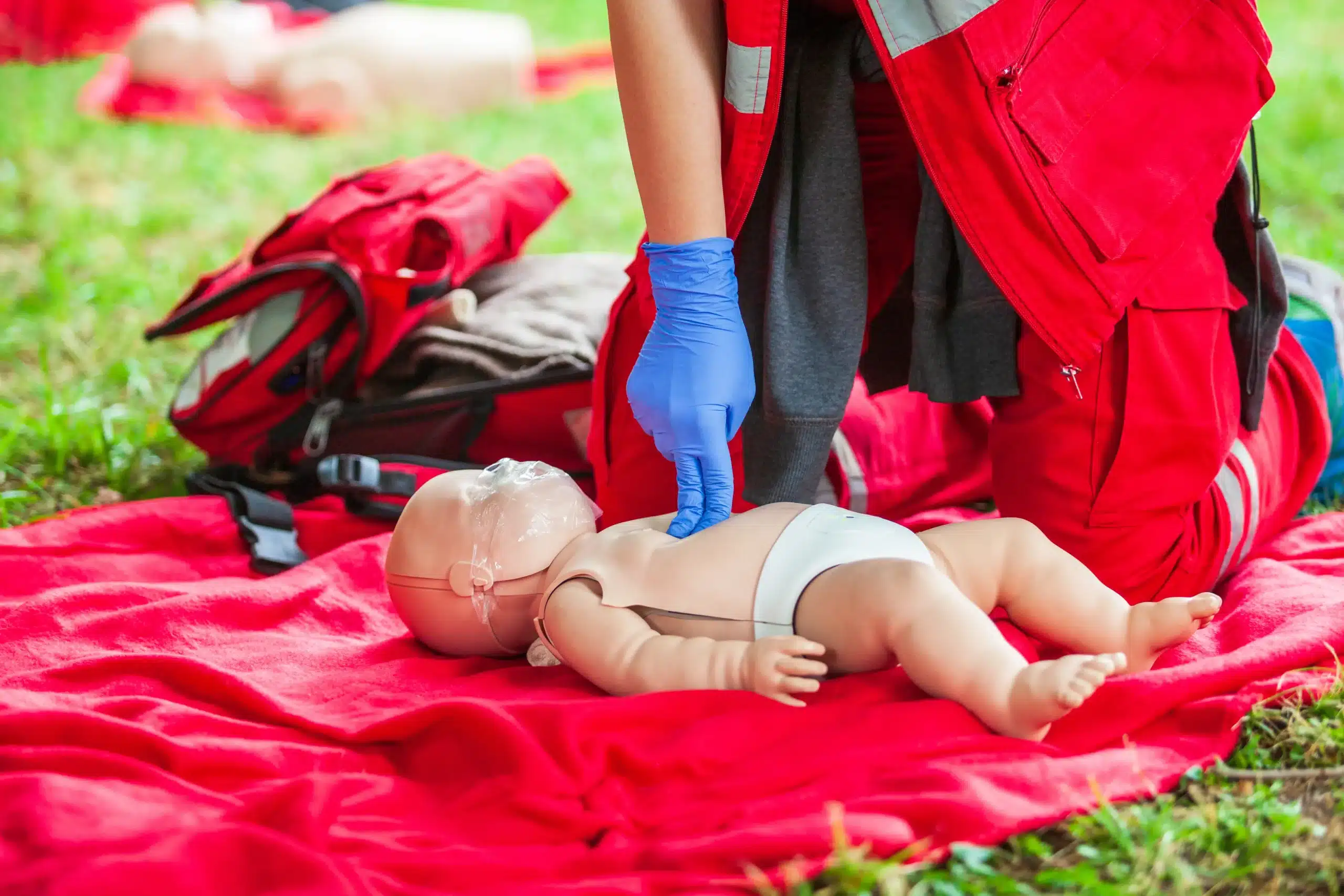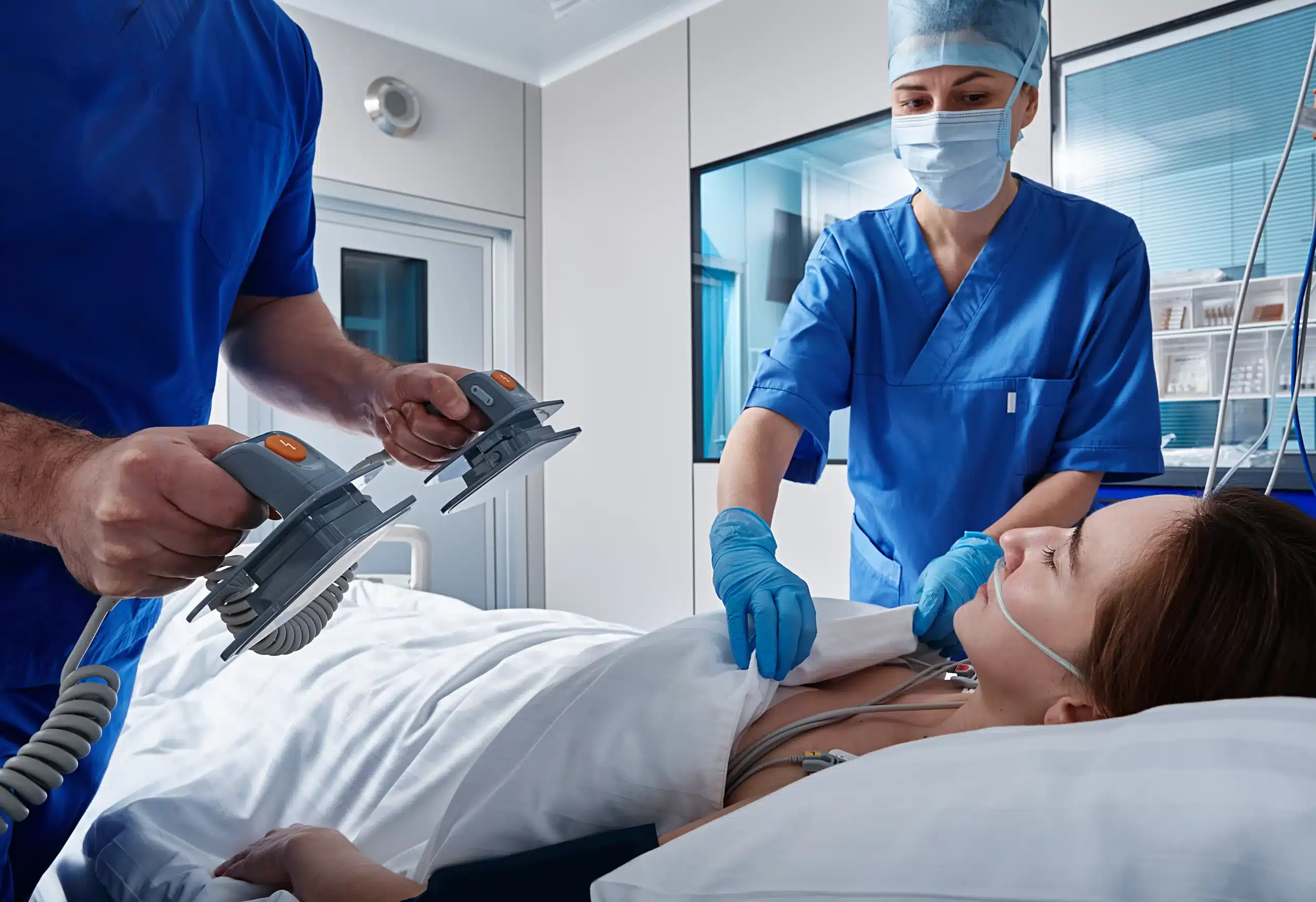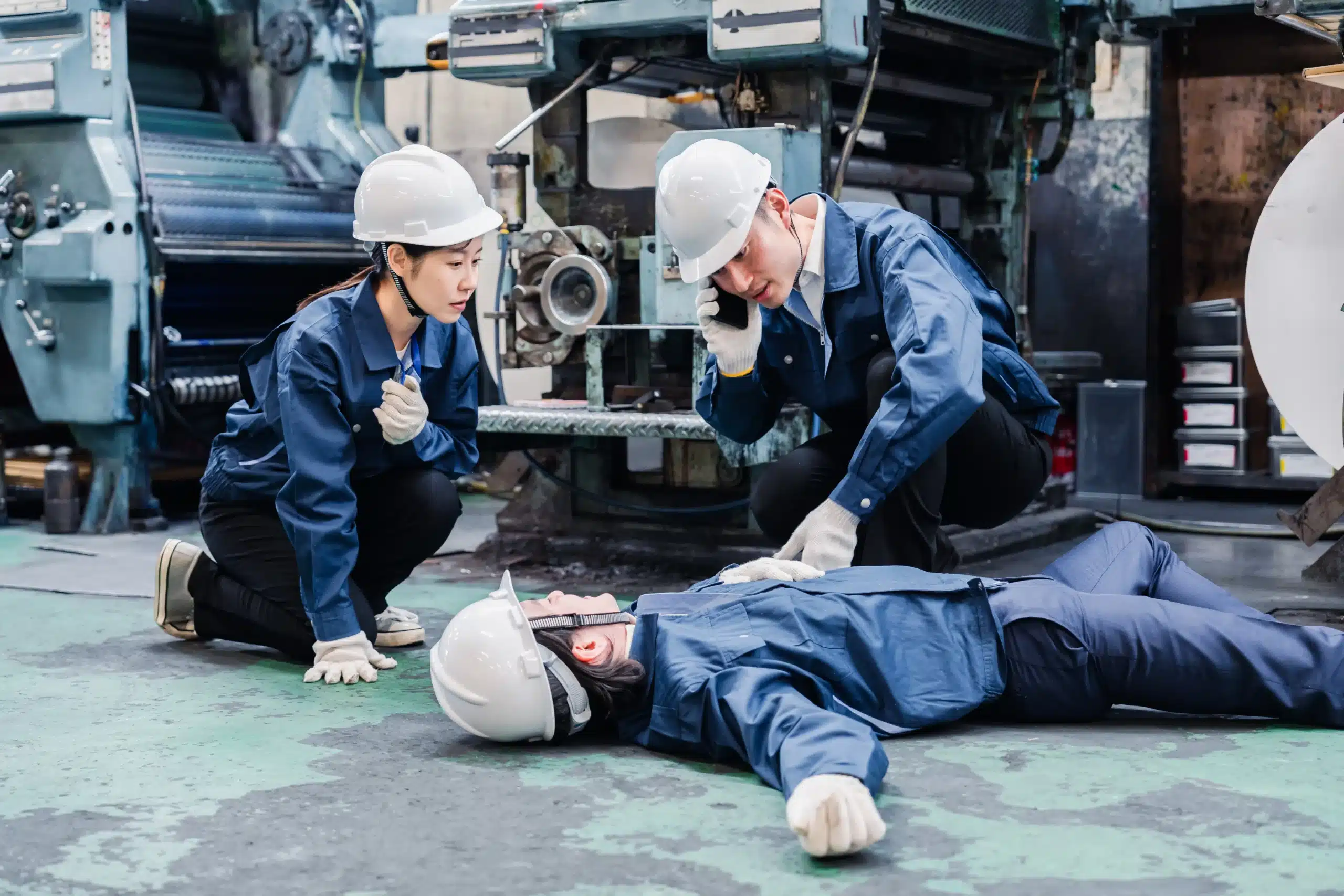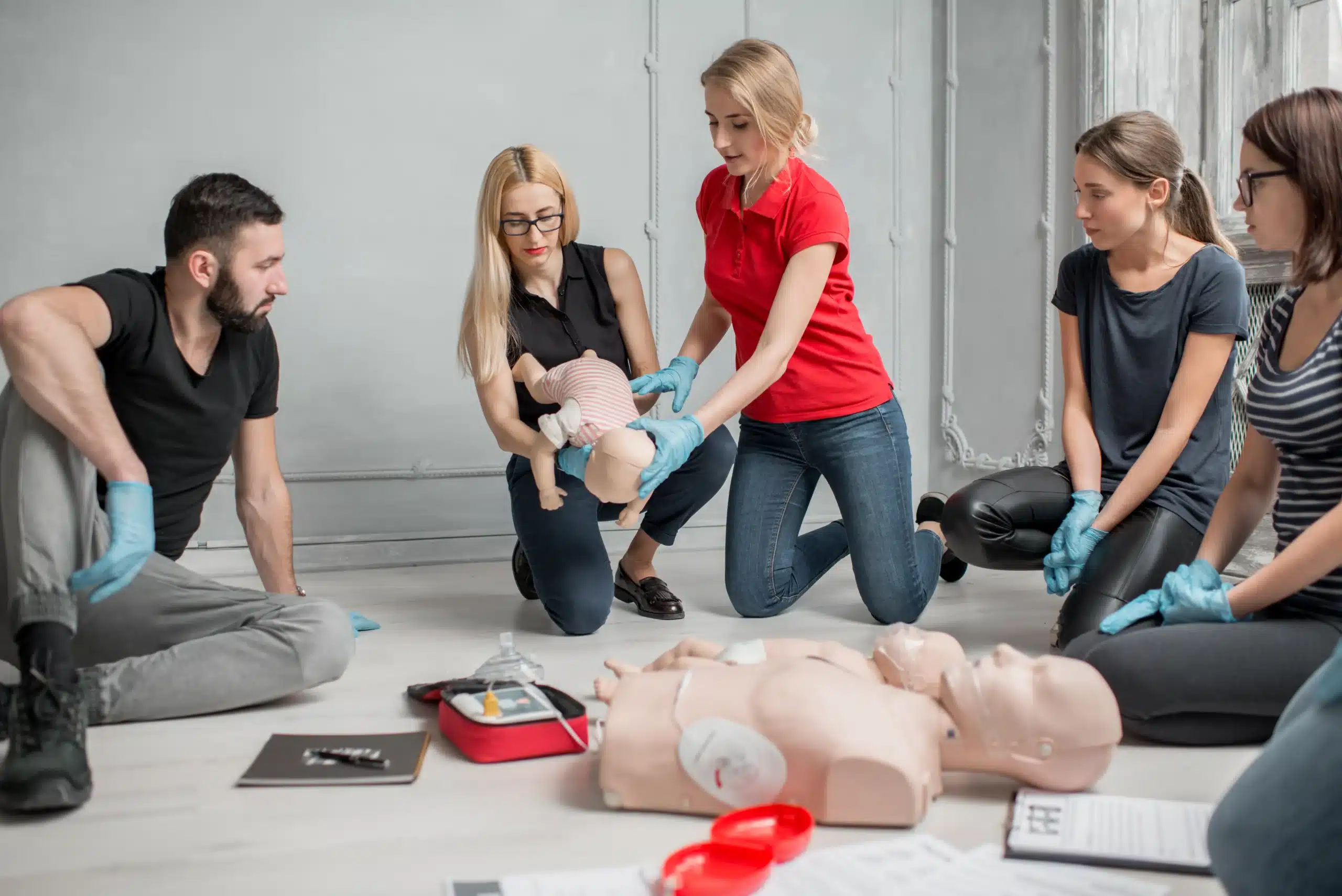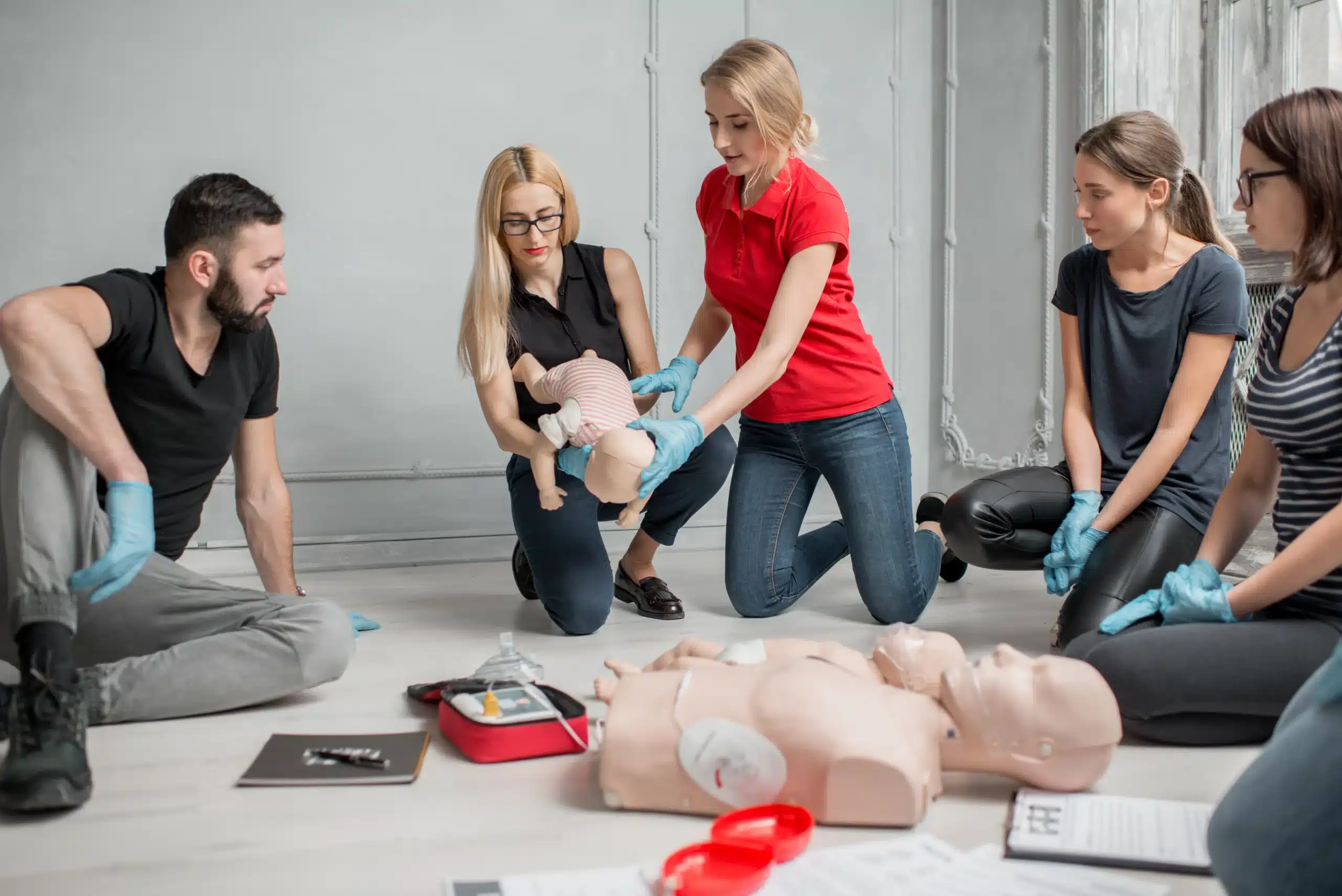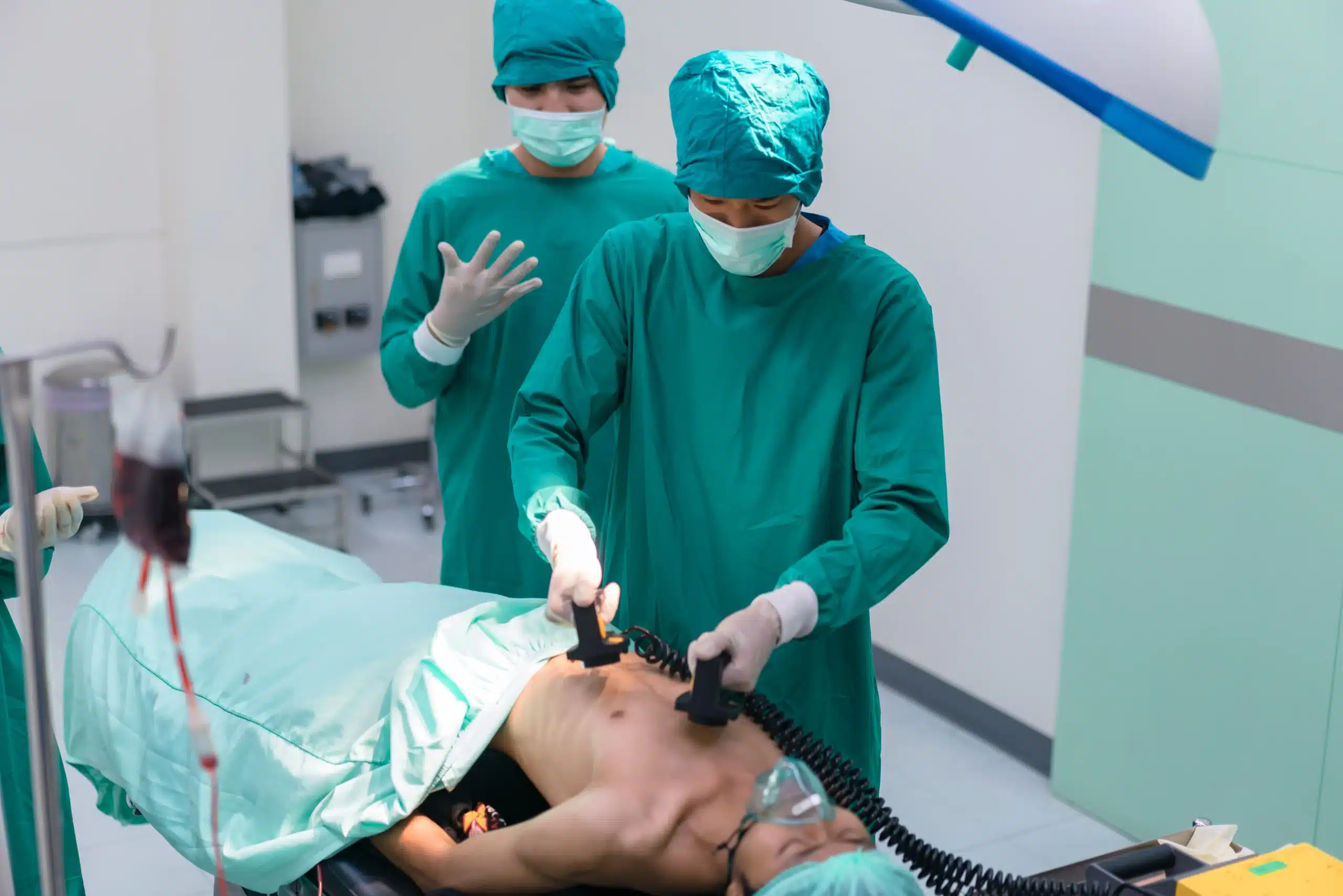Emergencies happen. It’s a fact of life. But how you respond can drastically change the outcome. Having CPR and first-aid training isn’t just about acquiring a skill; it’s about gaining the confidence to act quickly and effectively when every second counts. If you’re in San Jose and looking to learn CPR and first-aid, this guide is for you. We’ll break down the different types of training available, discuss the costs and benefits of certification, and help you find reputable training organizations offering CPR and first-aid in San Jose. Let’s get you prepared.
Key Takeaways
- CPR focuses on life-threatening situations, while first aid addresses a broader range of injuries: Knowing the difference helps you choose the right training for your needs. Consider combined CPR and first aid certification for comprehensive preparedness.
- Find a training format that fits your lifestyle: Whether you prefer in-person instruction, online learning, or a blended approach, there are options to suit your schedule and learning preferences.
- CPR and first aid certification builds confidence and equips you to make a difference: These skills empower you to respond effectively in emergencies, providing crucial support until professional help arrives. Stay current with your certification to maintain your skills.
What are CPR and First Aid?
CPR and first aid are distinct yet related skills essential for handling medical emergencies. Understanding their differences helps you choose the right training.
CPR, or Cardiopulmonary Resuscitation, addresses life-threatening situations where someone’s breathing or heartbeat has stopped. It involves chest compressions and rescue breaths, techniques designed to circulate oxygenated blood. Think of CPR as a bridge keeping someone alive until professional medical help arrives. It’s the critical first response to cardiac arrest. Learn more about our CPR courses.
First aid covers a broader spectrum of immediate care for various injuries and illnesses. From minor cuts and burns to more serious situations like fractures or recognizing stroke symptoms, first aid provides initial support and stabilization. It’s about assessing the situation, providing appropriate care, and helping someone until paramedics or other medical professionals take over. We offer comprehensive first aid training to equip you for these situations.
While different in their specific applications, both CPR and first aid are invaluable skills. They empower you to respond effectively in emergencies, potentially saving lives and minimizing harm. Often, these skills are taught together in certification courses, giving you a well-rounded foundation for responding to various medical emergencies.
Find CPR and First Aid Training in San Jose
Finding the right CPR and First Aid training in San Jose depends on your learning style and schedule. Luckily, several options are available, from traditional in-person classes to online courses and blended learning programs. Let’s explore the different formats so you can find the best fit.
In-Person Classes
If you thrive in a hands-on environment and appreciate direct interaction with an instructor, in-person CPR and First Aid classes might be right for you. The American Red Cross offers these courses throughout San Jose, covering essential life-saving techniques. For another option, check out the CPR Training Center, which offers CPR classes in San Jose, the greater Bay Area, and beyond. They even provide on-site training.
Online Courses
For those with busy schedules or who prefer learning at their own pace, online CPR and First Aid certification is a flexible alternative. Providers like ProTrainings offer entirely online programs accessible from any device. This allows you to complete the coursework whenever and wherever it’s convenient. Online certification lets you review the material as needed and master the skills before taking the certification exam.
Blended Learning
Combining the best of both worlds, blended learning programs offer a mix of online coursework and in-person skills sessions. The Red Cross offers this blended format for both CPR and First Aid. You can learn the theoretical concepts online and then practice your skills in person. CPR Training Center also provides blended learning options, such as their ACLS Blended Learning course, which starts with online modules and follows up with a hands-on skills evaluation. This approach provides a comprehensive learning experience.
Costs and Value of CPR/First Aid Certification
Understanding the costs and benefits associated with CPR and First Aid certification will help you make informed decisions about your training. This investment equips you to make a real difference in emergencies.
Average Course Costs
CPR and First Aid course costs vary depending on the certification level, the training provider, and the course format (online, in-person, or blended learning). For example, a Basic Life Support (BLS) CPR Provider course, including online coursework and in-person skills testing, typically costs around $120. This covers materials, instruction, and your official certification card.
Discounts and Promotions
Many training centers offer discounts, especially for group registrations. If you’re training with a group, ask about potential savings. Milpitas CPR Classes sometimes offers discounts for groups of two to five people. They also provide on-site training, often without extra fees. Check their website for current group discount options.
Benefits of Certification
CPR and First Aid certifications offer significant benefits. Most importantly, they equip you to respond confidently during medical emergencies, such as cardiac events, choking, or sudden injuries. AHA training emphasizes building this confidence. Certifications are typically valid for two years, giving you ample time to use and refresh your skills. Knowing you can potentially save a life offers invaluable peace of mind.
Choose the Right Certification
Deciding which certification to pursue—CPR, first aid, or both—depends on your individual needs and goals. This section clarifies the distinctions between these certifications and helps you make an informed choice. We’ll cover the key differences between CPR and first aid, when to use each, and the benefits of combined training.
CPR vs. First Aid – Key Differences
CPR (Cardiopulmonary Resuscitation) and first aid are both essential life-saving techniques, but they address distinct situations. CPR is specifically for individuals who are unconscious, not breathing, or experiencing agonal gasping (which can sometimes be mistaken for breathing). It involves chest compressions and rescue breaths to circulate oxygenated blood and maintain vital organ function until professional medical help arrives. First aid, on the other hand, encompasses a broader range of skills to manage various injuries and illnesses. This can include treating minor wounds, burns, sprains, and allergic reactions, as well as recognizing and responding to more serious medical emergencies like strokes or seizures. For those interested in learning more, CPR and first aid certification courses are available.
When to Use Each Certification
CPR is crucial in immediately life-threatening situations where someone’s heart and breathing have stopped. Think cardiac arrest, near-drowning, or suffocation. The goal of CPR is to restore blood circulation and oxygen delivery to the brain and other vital organs, buying precious time until paramedics arrive. First aid skills are valuable in a wider array of circumstances, some less critical than others. While some first aid scenarios may require immediate action (like controlling severe bleeding), others involve stabilizing the individual and preventing further harm until professional help is available. The American Heart Association offers more information on CPR and its importance.
Combined Training Options
Given that CPR and first aid skills often complement each other, many organizations, including the American Heart Association (AHA) and the American Red Cross, offer combined CPR/AED and first aid certification courses. These comprehensive courses equip you to handle a broader spectrum of emergencies, from cardiac arrest to everyday injuries. They are available in various formats, including in-person classes and online or blended learning options that combine online instruction with in-person skills assessments. Milpitas CPR Classes offers a range of these options, making it easy to find a course that fits your schedule and learning style.
Reputable Training Organizations in San Jose
Finding the right CPR and first aid training provider is crucial for a quality learning experience. Here are a few reputable organizations offering courses in San Jose:
American Heart Association (AHA)
The American Heart Association (AHA) sets the standard for CPR and first aid training. They offer a range of courses, from basic CPR to Advanced Cardiovascular Life Support (ACLS) and Pediatric Advanced Life Support (PALS). AHA courses are known for their hands-on approach, and certifications are widely accepted. You can find AHA-certified training centers throughout San Jose and the surrounding Bay Area, including Milpitas, Hayward, Sacramento, and Salinas. Learn more about AHA courses offered in Milpitas.
American Red Cross
The American Red Cross is another well-respected provider of CPR and first aid training. Their courses cover essential life-saving skills and meet OSHA requirements for many workplaces. The Red Cross offers various learning formats, including in-person classes and blended learning options that combine online coursework with hands-on practice. Find a Red Cross CPR class near you.
Safety Training Seminars
Safety Training Seminars specializes in group training, offering discounted rates for businesses and schools. They can even bring the training to your location, making it convenient for your team. As an AHA Training Center partner, Safety Training Seminars delivers high-quality, accredited instruction. Learn more about group discounts for CPR and first aid training.
Milpitas CPR Classes
For those in and around Milpitas, Milpitas CPR Classes offers a focused selection of AHA-certified courses. They emphasize real-world preparedness, giving you the confidence to handle emergencies effectively. Their training covers CPR, AED use, and other essential skills. Explore their course offerings in Milpitas, conveniently serving the San Jose area.
Why CPR and First Aid Skills Matter
Knowing CPR and first aid can make a real difference in critical situations. It’s about more than just checking a box for work or school—it’s about equipping yourself to help someone in need, whether it’s a family member, a friend, a coworker, or even a stranger.
Responding to Cardiac Emergencies
CPR (Cardiopulmonary Resuscitation) is the immediate response to a cardiac arrest. When someone’s heart stops beating effectively, every second counts. CPR involves chest compressions and rescue breaths, which help circulate oxygenated blood to the brain and other vital organs. Learning CPR from a certified instructor, like those at Milpitas CPR Classes, gives you the skills to potentially save a life while waiting for professional medical help.
Handling Common Injuries
Beyond cardiac emergencies, first aid skills are essential for handling a wide range of everyday injuries. Think about cuts, burns, sprains, or even allergic reactions. Knowing how to clean and dress a wound, apply a splint, or administer an EpiPen can prevent further complications and promote faster healing. First aid training covers these essential skills, empowering you to provide immediate care and minimize discomfort for someone in need.
Build Confidence in Emergencies
Perhaps one of the most valuable aspects of CPR and first aid training is the confidence it instills. Emergencies are stressful, and knowing what to do can make all the difference. Rather than feeling helpless or panicked, you’ll be equipped to assess the situation, make informed decisions, and take action. This confidence can not only help the person you’re assisting but also provide you with a sense of control and calm in a chaotic situation. Consider enrolling in a CPR and first aid class to invest in your ability to respond effectively and make a positive impact when it truly matters.
Get Certified and Stay Up-to-Date
Knowing how to respond to emergencies can make all the difference. Whether you’re a healthcare professional, a childcare provider, or simply someone who wants to be prepared, staying current with your CPR and first aid skills is essential. This section covers everything you need to know about getting certified and maintaining your skills.
Enroll in a Course
Finding a CPR and first aid class in San Jose is straightforward. Organizations like the American Red Cross offer various courses to fit your schedule and learning style. Milpitas CPR Classes provides comprehensive training in the area, covering everything from basic CPR to more advanced certifications like BLS and ACLS. Look for a class that aligns with your specific needs and offers convenient scheduling.
Renew Your Certification
CPR and first aid certifications typically expire after two years. Renewing your certification is important to ensure your skills are current and you’re prepared to act in an emergency. Many training providers offer renewal courses that cover the latest guidelines and techniques. Check with your certifying organization for specific renewal requirements. For medical professionals needing to renew their certifications, programs like the RQI program offered by Milpitas CPR Classes can be a valuable resource.
Continuing Education
The medical field is constantly evolving, and best practices for CPR and first aid are regularly updated. Committing to continuing education ensures you’re always equipped with the most current knowledge and techniques. Look for opportunities to expand your skillset and stay informed about advancements in emergency care. Consider adding certifications like PALS or NRP through a provider like Milpitas CPR Classes to further enhance your expertise.
Correcting Common Misconceptions
There’s often confusion about the difference between CPR and first aid. CPR is specifically for individuals who are unconscious and not breathing normally, indicating cardiac arrest. It involves chest compressions and rescue breaths. First aid, on the other hand, encompasses a broader range of skills for treating various injuries and illnesses. Understanding the difference between CPR and first aid is crucial for providing appropriate care in different situations. Often, training courses will combine CPR and first aid instruction, giving you a well-rounded skill set to handle various emergencies. This combined approach is often a convenient and efficient way to gain comprehensive knowledge in emergency response.
Related Articles
- CPR Certification in San Jose: Your Complete Guide – Milpitas CPR Classes
- Pediatric CPR & First Aid Classes in San Jose – Milpitas CPR Classes
- First-Aid Training in Santa Clara: Your Guide – Milpitas CPR Classes
- CPR Courses in San Jose: The Complete Guide – Milpitas CPR Classes
- The Importance of Workplace CPR and First-Aid Training
Frequently Asked Questions
What’s the difference between online and in-person CPR training? Online CPR training offers flexibility, letting you learn at your own pace and on your own schedule. In-person classes provide hands-on practice and direct interaction with an instructor, which can be beneficial for mastering the physical skills. Blended learning combines both approaches.
How much does CPR certification cost in San Jose? Costs vary depending on the provider, the type of certification (CPR, first aid, or combined), and the course format. Expect to pay around $100-$150 for a basic CPR/AED certification course. Look for group discounts if you’re training with friends, family, or colleagues.
Which CPR certification is right for me? The best certification depends on your individual needs. If you need CPR training for your job, check your workplace requirements. For most people, a basic CPR/AED and first aid certification is a good starting point. Healthcare providers often require more advanced certifications like BLS, ACLS, or PALS.
How often do I need to renew my CPR certification? CPR certifications are typically valid for two years. Check with your certifying organization for specific renewal requirements. Staying up-to-date is crucial for maintaining your skills and ensuring you’re prepared to respond effectively in an emergency.
Where can I find CPR classes near me in San Jose? Several organizations offer CPR classes in San Jose and the surrounding areas. The American Red Cross, the American Heart Association, and specialized training centers like Milpitas CPR Classes provide various courses and schedules. Online searches and checking local community centers can also help you find convenient options.
